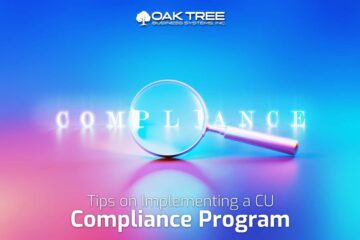
Implementation and Transition November of 2013 was a busy time for Federal regulators as they approved final rules combining some of the RESPA rules with other rules still required under The TILA. Congress’s intent is to create an entirely new set of disclosures that when in place, will provide consumers with information (both new & old) formatted in such a way that provides the utmost clarity and consumer understanding. Let’s discuss the New Integrated RESPA/TILA Disclosures.
The new integrated disclosures will fall into two categories (e.g. “Loan Estimate” and “Closing Disclosure”). The “Who, What, When, Where & Why” The new integrated disclosures will need to be provided by creditors or mortgage brokers that receive an application [Emphasis Added] from a consumer for a closed-end credit transaction secured by real property on or after August 1st, 2015. Creditors are prohibited from using the new disclosures for applications that are received prior to that August 1st date and will instead need to follow the current disclosure requirements under Regulations X and Z, and use the existing forms (e.g. Truth-In-Lending disclosures, GFE, Settlement Statements, etc.). The Federal regulators have built in a “transition period” or overlap of time, during which both sets of disclosures will need to be available and creditors will need to use the forms/disclosures that are appropriate to the specific transaction at hand. As applications received prior to August 1st, 2015 are consummated, withdrawn, or canceled, use of the existing GFE, Settlement Statements, and Truth-In-Lending forms will, for the most part, no longer apply. Closed-end reverse mortgages will still be subject to the current disclosure requirements under Regulations X and Z. As this particular “overlap” of disclosures can be particularly tricky, you really need to contact our Client Services Department for full details (Jenny@oaktreebiz.com – 800.537.9598). While August 1st may seem like a long way off, from a practical standpoint it isn’t, and for that reason, the construction of the new forms at Oak Tree is well underway to be certain of their availability in time for the new deadline. Given the size of the new documents and the scope of the transaction-specific information that must be mapped or otherwise programmed by your data processor, once you receive your proofs you will want to approve and return them as quickly as possible.
ELECTRONIC FUND TRANSFER AGREEMENT (REGULATION E) The Electronic Fund Transfer Act is a consumer protection statute that, among other things, limits a consumer’s potential liability for unauthorized transactions made with an approved account access device. The exact amount of the liability is for the most part, determined through the use of a tiered approach that is driven by the time within which a consumer notifies the financial institution. For example, when a consumer notifies a financial institution within two (2) business days after his learning of the loss or theft of the access device, the regulation provides that the consumer’s liability will be restricted to the lesser of $50.00 or the sum of the unauthorized transfers that occur before notice. In the event that the consumer fails to notify the financial institution within two (2) business days after learning of the loss or theft of the access device, the consumer’s liability will increase to the lesser of $500.00, or: (i) $50.00 or the amount of unauthorized transfers that occur within the two (2) business days, whichever is less plus (ii) The amount of unauthorized transfers that occur after the close of two (2) business days and before notice to the institution, provided the institution establishes that these transfers would not have occurred had the consumer notified the institution within that two-day period. The consumer may be liable for additional amounts, depending on the specific set of circumstances.
Since this regulation only establishes a consumer’s maximum liability, institutions are permitted to reduce these limits. Such is the case with the Zero Liability Rules that have been issued by both Visa and MasterCard. With respect to MasterCard, their revised zero liability rule now requires that the consumer use reasonable care in safeguarding the Card from loss or theft; and upon becoming aware of such loss or theft, promptly report that loss or theft to the Credit Union.
There’s more detail to be had here (“the fine print”) and we’re always available to pass it along to you. When you use Oak Tree for your credit union document needs, you can be sure we are keeping an eye on these kinds of changes to keep your forms compliant. We will ensure you are ready for the next “New Integrated RESPA/TILA Disclosures”.
(note: this is an older blog entry and has been edited since originally posted.)


